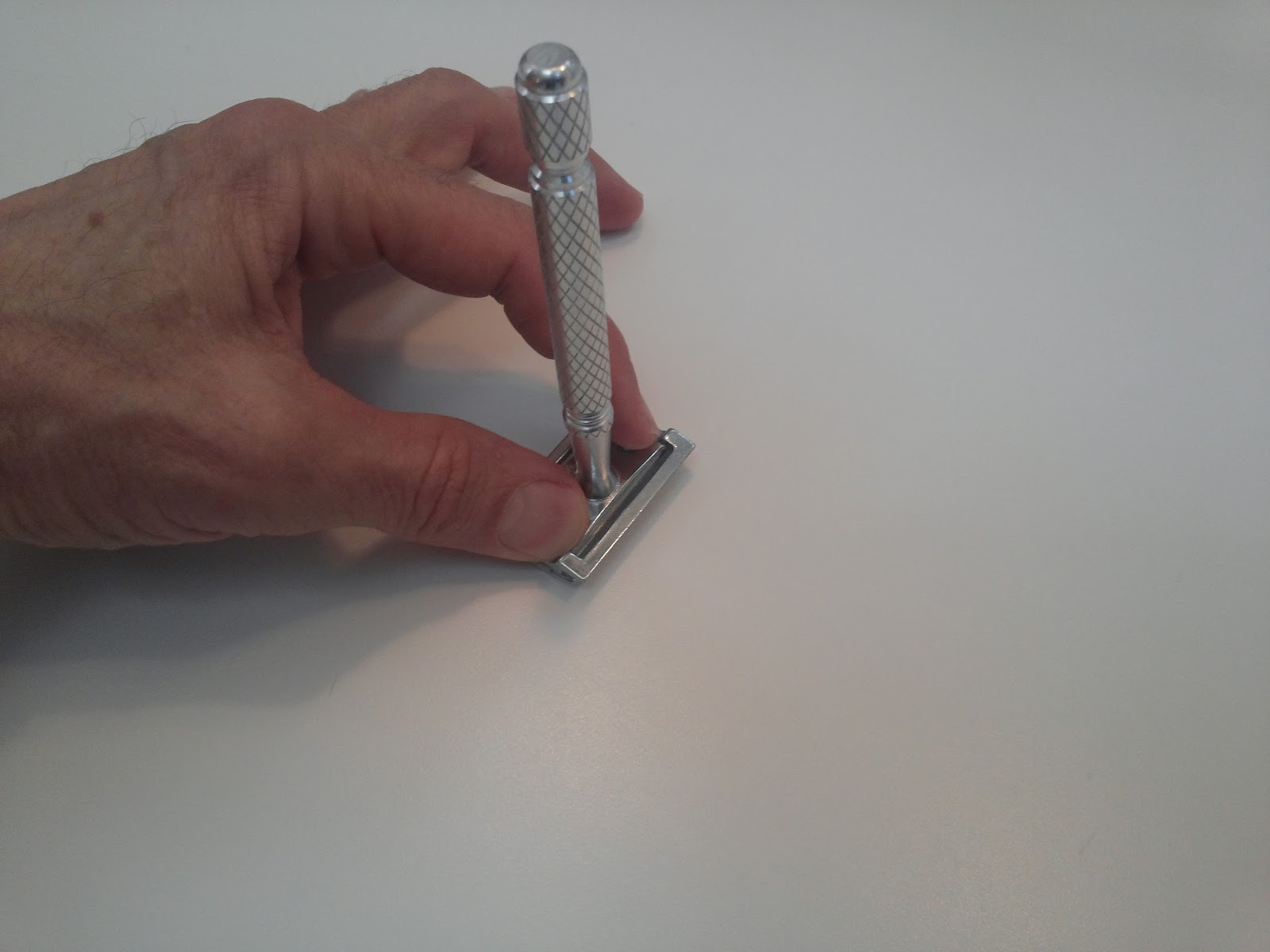I made a bold undertaking this morning: I attempted a head-to-head comparison between four shave soaps. The plan was to make up four lathers in four separate bowls. Then divide the most sensitive real estate on my face and neck into four roughly-equivalent areas and shave them with the same razor, blade and technique. Unlike most medical experiments, I was both the experimenter and the guinea pig.
There were many challenges with this process. Regarding quality of the lather, I attempted to standardize this by, first of all, trying to use about the same wetness in the shaving brush for each soap. Then I swirled the brush on a given soap puck for about ten seconds. Then I lathered in a stainless lathering bowl for about ten seconds. Then using my fingers I transferred the resulting shave lather to a re-purposed yogurt cup, rinsed the tools and did the whole thing again for the next soap. This whole lather-making process was the first issue because I standardized the process rather than using the best process for a given soap to make lather. As a result, some of the lathers were a bit less pasty (more runny) than I might normally use.
I applied the lather from the yogurt cups to my face using my index finger, which, again, deviates from the normal process of applying lather with the brush. On a given pass, I would apply one soap on its allotted real estate, shave that area, rinse, and move on to the next area with the next soap. The finger-application method generally resulted in a more watery, more translucent application of soap; my normal brush-applied lather is opaque and creamy but not deep -- only a millimeter or so.
I did three passes during the evaluation; the usual ones: with, then across, and finally against the grain. When I was done, there was little difference, so I picked one of the soaps, took out a different razor and blade, and did a complete, full-face, three-pass shave. I was thinking that this would increase the opportunity for face abuse, and thereby highlight the differences in the areas that received six passes.
The good news is that I got a very close shave this morning!
The bad news is that the head-to-head comparison was useless. Although there are clear differences in the characteristics of the lather from different soaps when using a (more or less) standardized lathering process, the only outcome that matters is the quality of the shave.
Many wet shavers pay attention to various perceivable characteristics of a given shave lather, but in reality, given all the variables involved in just making that lather, it is very difficult to determine relative quality of the shaves.
This means that I need to give more thought to getting better, objective evaluations of shave soap outcomes. Perhaps I will write another article on this in the future.
For now, I am still the face of the guinea pig, and that face is red -- not from making too many passes, but crimson with embarrassment.
Happy shaving!
There were many challenges with this process. Regarding quality of the lather, I attempted to standardize this by, first of all, trying to use about the same wetness in the shaving brush for each soap. Then I swirled the brush on a given soap puck for about ten seconds. Then I lathered in a stainless lathering bowl for about ten seconds. Then using my fingers I transferred the resulting shave lather to a re-purposed yogurt cup, rinsed the tools and did the whole thing again for the next soap. This whole lather-making process was the first issue because I standardized the process rather than using the best process for a given soap to make lather. As a result, some of the lathers were a bit less pasty (more runny) than I might normally use.
I applied the lather from the yogurt cups to my face using my index finger, which, again, deviates from the normal process of applying lather with the brush. On a given pass, I would apply one soap on its allotted real estate, shave that area, rinse, and move on to the next area with the next soap. The finger-application method generally resulted in a more watery, more translucent application of soap; my normal brush-applied lather is opaque and creamy but not deep -- only a millimeter or so.
I did three passes during the evaluation; the usual ones: with, then across, and finally against the grain. When I was done, there was little difference, so I picked one of the soaps, took out a different razor and blade, and did a complete, full-face, three-pass shave. I was thinking that this would increase the opportunity for face abuse, and thereby highlight the differences in the areas that received six passes.
The good news is that I got a very close shave this morning!
The bad news is that the head-to-head comparison was useless. Although there are clear differences in the characteristics of the lather from different soaps when using a (more or less) standardized lathering process, the only outcome that matters is the quality of the shave.
Many wet shavers pay attention to various perceivable characteristics of a given shave lather, but in reality, given all the variables involved in just making that lather, it is very difficult to determine relative quality of the shaves.
This means that I need to give more thought to getting better, objective evaluations of shave soap outcomes. Perhaps I will write another article on this in the future.
For now, I am still the face of the guinea pig, and that face is red -- not from making too many passes, but crimson with embarrassment.
Happy shaving!
.jpg)
























